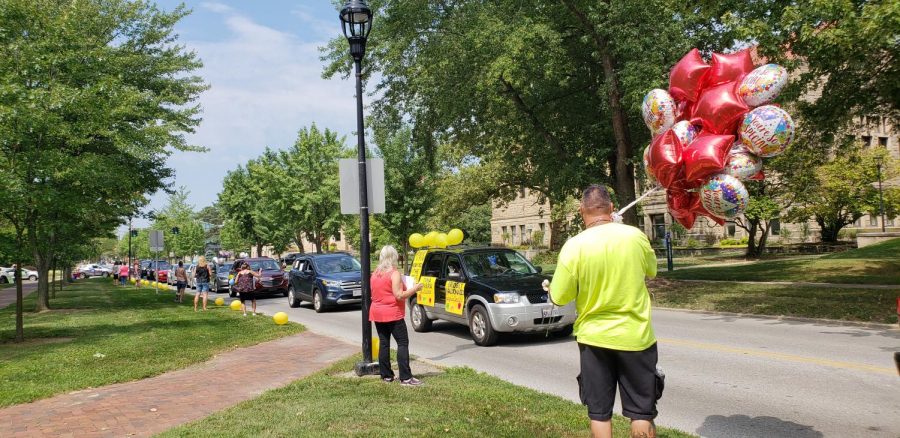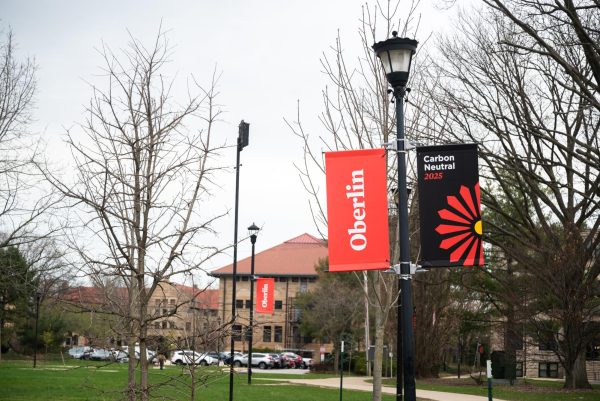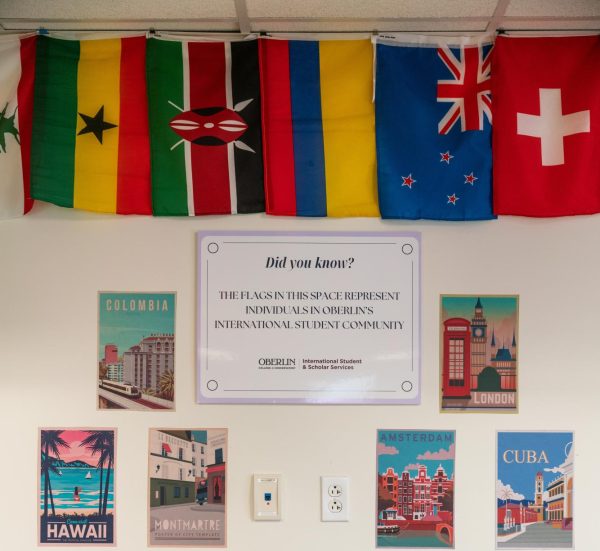College and UAW Reach Severance Agreement, UAW Drops Labor Charge
A socially-distanced parade lined up on Aug. 15 to say goodbye to all workers who were laid off due to outsourcing of custodial and dining services.
After negotiating the post-employment terms for outsourcing 108 dining and custodial employees, the College and the United Auto Workers union have settled on a transition agreement that includes three months severance pay and one year of health insurance. Additionally, the UAW has dropped the charge it brought to the National Labor Relations Board on July 3, which accused the College of negotiating in bad faith.
The effects bargaining process officially ended Aug. 3. In addition to the health benefits and pay, the College will provide its former employees with outplacement services or up to $2,500 for training or tuition, as well as tuition assistance for dependents who are at least 14 years old. Additionally, the College will pay out any unused vacation or sick time.
“The key goal for the College was to ensure that, particularly during a pandemic, we did not see these team members without health benefits,” said Vice President for Finance and Administration Rebecca Vazquez-Skillings.
The UAW initially brought a NLRB charge against the College for exhibiting bad faith in the outsourcing negotiations, but it dropped the charge during the effects bargaining process.
“As we went through the effects bargaining, the union did agree that we had bargained in good faith,” Vazquez-Skillings said. “We initiated these conversations back in February, knowing full well that there was no need for us to bargain on the decision — we could have gone directly to effects bargaining, but it was important for us to engage in a conversation. And that was done truly in good faith, with authenticity.”
The College asked the UAW to drop the NLRB charge during the effects negotiations process, but says that it did not pressure the UAW into doing so. Still, Matt Kubach, a member of the negotiating team for the Oberlin UAW chapter, claims that he worried that if they did not agree to drop the charge, they might have received fewer benefits from the College.
“Legally, the school wasn’t really bound to do much of anything because there was no language [in our contract] that supported that,” said Kubach. “You kind of run into this problem. You’re like, ‘Well, we can really fight this labor charge, but then we might lose a lot of these severance benefits because we’re going to fight that charge.’ Do you want to die on that hill?”
In contrast, Vazquez-Skillings says that the College would have provided the extra benefits regardless of the UAW’s decision to drop the charge.
“The College did not pressure the UAW into withdrawing the charge,” Vazquez-Skillings wrote in an email to the Review. “The College did indicate that it was interested in resolving all outstanding disputes between the parties, one of which was the unfair labor practice charge. During negotiations, the College never suggested that it would not provide the proposed benefits if the charge were not withdrawn. Ultimately, the UAW decided on its own accord to withdraw the charge and to incorporate its intent to withdraw into the agreement.”
Joyce Goldstein, a labor and employee benefits lawyer representing the UAW agrees the College did not explicitly coerce the UAW into dropping the charge, but does claim that the charge was indirectly linked to the negotiations.
“Beginning with its first proposal, the College consistently included a provision that required the UAW to drop its unfair labor practice charge regarding the College’s failure to bargain in good faith,” Goldstein wrote in an email to the Review. “The extra severance benefits were always linked to the UAW’s agreement to withdraw the NLRB charge.”
The College maintains that the UAW could have gone forward with the charge if it wanted to.
“It would be improper for us to compel them to make any connection between the effects bargaining outcome and the unfair labor practice; it is within their right to file that unfair labor practice,” said Chief of Staff David Hertz. “We were pleased that they made the decision — completely independent of our wishes — to withdraw it.”
Still Vazquez-Skillings points out that the NLRB fully approved the UAW’s request to withdraw their charge.
“By accepting the UAW’s withdrawal, the NLRB also confirmed that the withdrawal was not coerced,” she said.
Still, Goldstein claims that moving forward with the NLRB charge wasn’t a viable option for the UAW because of the labor justice system.
“As a legal matter, the College is correct in stating that it would have been illegal for the College to condition severance benefits on the Union’s agreement to drop the charge,” she wrote. “But the UAW wasn’t willing to leave its members in limbo for years of litigation over this issue. It was more important to immediately get the benefits for these workers who were about to lose their jobs than to spend years at the NLRB. Labor laws are often violated because their enforcement is so bureaucratic and their remedies so weak.”
Associate Professor of Labor Studies and Employment Relations at Rutgers University, Rebecca Givan, OC ’97, explains that, much of the time, NLRB charges can’t do much for workers.
“If you get a ruling a year from now that says that the College didn’t act in good faith, the remedy would be very weak, perhaps nothing,” Givan said. “Possibly Oberlin would have to post a sign to its current ongoing employees saying ‘We’ve been found to be in violation of the National Labor Relations Act’. … It can shine a light on cases where the employer has violated the law, but the teeth are really not there.”
Still, Kubach would have liked to see the process through.
“The whole process was messed up, which was why we filed the labor board charge originally,” Kubach said. “I think a lot of people wanted to see that through because ultimately it wasn’t going to do anything to save the jobs, but when the school is worried about press — that was going to be our last win.”
All employees were required to sign a general release agreement before receiving their benefits. The agreement states that employees forever discharge Oberlin College “for any cause of action or liability related to their hire, employment, and separation from employment, including, but not limited to, any claim of breach of contract, common law tort, discrimination.”

Vazquez-Skillings explained that the terms of the severance agreement are not related to the NLRB charge.
“It is standard practice to institute severance agreements for separations of employment,” she said. “The release indicates that the employee is satisfied with the full terms of the agreement.”
On Aug. 15, a socially-distanced parade lined up on N Professor Street to say goodbye to all workers who were laid off. College employees drove cars decorated with balloons and goodbye posters, while others stood on the side wearing masks and standing six feet apart. Some held signs with the names of friends and coworkers, along with how many years they had worked at the College.







